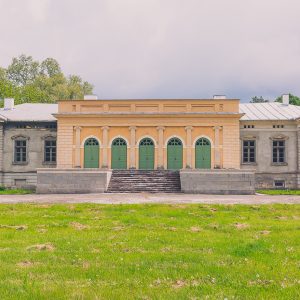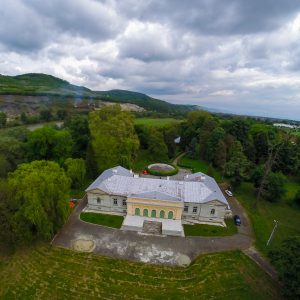- National Monument Number:
- HD-II-a-A-03366
- Address:
- Vețel commune, village of Mintia, str Matei Corvin, nr. 34 B
- Dated to:
- 16th century
- Ownership:
- private property
The captain of Deva, Gyulay Ferenc I. received the estate as a royal gift in 1638. He most likely began the construction of the first castle soon after. It was a renaissance castle that was modified two centuries later by the last person from the male line of the family, count Gyulay Lajos. Gyulay Lajos was a man with many interests. He did not start a family, as he dedicated his life to science and politics. Not only was he the person who suggested the creation of the Transylvanian Museum Society to Mikó Imre, but he was the one who outlined the plans for the Cluj-Napoca/Kolozsvár botanical garden.
The castle was built between 1831 and 1834 according to the plans of an engineer by the name of Stuller. The building became the first classicist castle of Transylvania, as well as the first castle to be fitted with a bathroom. The five-acre castle gardens gave home to Transylvania’s richest collection and lapidarium from the period of the Roman Empire. During the 1848 revolution, Romanian uprisers pillaged the castle and scattered the contents of the library. The damages done to the castle were repaired by 1851. That was when the castle gained its modern-day shape. The main feature of the facade is a central avant-corps with a pronounced cornice divided into arcade-like sections by ionic pilasters. The monumentality of the avant-corps is further accentuated by the stairway leading up to it, as well as the corner risalits ornate with triangular tympana. The two corner risalits at the posterior facade are also distinguished with tympana. Between them lies a charming veranda with arcades sectioned by pillars, with a view to the vast park.
The castle belonged to several noble families during the period following Gyulay’s death, and was eventually nationalized while it belonged to the Horváth-Tholdy family. It then functioned as an office of the collective, later as a pub and village shop. In 1988 it was used by the police. Horváth-Tholdy Péter regained property of the estate in 2007.
















